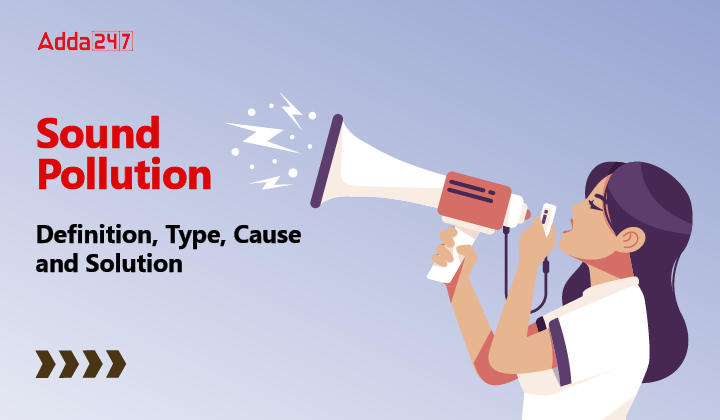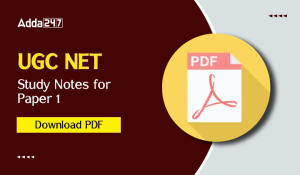Table of Contents
Man has made the earth room to pollutants. enhanced level of carbons and other pollutants has made life difficult on the green planet. Pollution is not solely concerned with degraded air and water but noise is also one of the factors contributing to it. in the article below we will get detailed insights into sound pollution, its meaning, definition, types, causes and solutions to check on this issue.
In today’s bustling world, the term “pollution” usually conjures images of smog-filled skies and plastic-littered oceans. However, one form of pollution that often goes unnoticed but has far-reaching consequences on our health and well-being is sound pollution, also known as noise pollution. Defined as the excessive and displeasing noise that disrupts the natural environment, sound pollution poses significant challenges to both humans and wildlife alike.
What is Sound Pollution?
Sound pollution can be understood as the excessive presence of noise in the environment, interfering with natural sounds and causing discomfort, irritation, and even adverse health effects. While sound is a natural part of life, the issue arises when it exceeds certain levels and becomes disruptive to the balance of ecosystems and human activities.
Unit of measuring the sound in decibels. hence, it can be said that there is an existence of sound pollution if the loudness of the sound increases by a particular limit. a normal human being can tolerate daily exposure of a maximum of 85 dB, without any substantial damage to their hearing capacity. Hence, sound more than the intensity of 85 dB is considered to be painful and comes in the category of sound pollution.
Types of Sound Pollution
There are different types of sound pollution depending on the factors contributing to it. these are as follows:
| Types | Factors |
| Transportation Noise |
|
| Industrial Noise |
|
| Community and Residential Noise |
|
| Recreational Noise |
|
| Institutional Noise |
|
| Natural Causes |
|
| Occupational Noise | Workplace Noise: Noise exposure in various occupational settings, such as factories, construction sites, and airports, where workers may be subjected to high noise levels. |
| Traffic Signals and Horns | Vehicle Horns: Excessive and unnecessary use of vehicle horns can contribute to noise pollution in urban areas. |
Sound Pollution range in DB
| Sound Source | Decibel Level (dB) |
|---|---|
| Whisper | 20 dB |
| Library | 30 dB |
| Residential Area | 40 dB |
| Normal Conversation | 60 dB |
| Office Environment | 50-60 dB |
| Vacuum Cleaner | 70 dB |
| Busy Traffic (from 100 ft) | 70-80 dB |
| Busy Restaurant/Café | 80 dB |
| Alarm Clock | 80-90 dB |
| City Traffic (inside a car) | 85 dB |
| Hair Dryer | 90 dB |
| Lawnmower | 90 dB |
| Motorbike (from 25 ft) | 95 dB |
| Chainsaw | 100 dB |
| Rock Concert | 110-120 dB |
| Car Horn | 110 dB |
| Fireworks | 140 dB |
| Jet Engine (at takeoff) | 140-150 dB |
Examples of Noise Pollution
Noise pollution refers to the excessive or disturbing noise that interferes with normal activities, disrupts the natural environment, and can have adverse effects on human health and wildlife. Here are some examples of noise pollution:
- Traffic Noise: Noise from vehicles, especially in busy urban areas, can be a significant source of noise pollution. It includes the sound of cars, trucks, motorcycles, buses, and honking horns.
- Industrial Noise: Industries and factories often produce loud noises from machinery, equipment, and processes, contributing to noise pollution in the surrounding areas.
- Construction Noise: Construction sites generate loud and continuous noises from various activities like drilling, hammering, and heavy machinery, impacting nearby residential and commercial areas.
- Aircraft Noise: Airports and flight paths near residential areas can produce high levels of noise from aircraft taking off, landing, and flying overhead.
- Recreational Noise: Noise from recreational activities like loud music at parties, concerts, sporting events, and fireworks can disturb local communities.
- Neighborhood Noise: Noise from lawnmowers, leaf blowers, power tools, barking dogs, and other household activities can cause noise pollution in residential areas.
- Public Transport Noise: Noise from buses, trains, and subways can be a significant source of noise pollution, especially in crowded urban areas.
- Commercial Establishments: Restaurants, bars, and entertainment venues with loud music or sound systems can contribute to noise pollution in their vicinity.
- Emergency Sirens: Loud sirens from emergency vehicles, such as police cars, ambulances, and fire trucks, can create noise pollution, albeit for a short duration.
- Outdoor Events: Festivals, fairs, and public gatherings with amplified sound systems can create noise pollution in the surrounding areas.
- Household Appliances: Appliances like air conditioners, vacuum cleaners, and washing machines can contribute to indoor noise pollution, especially if they are old or poorly maintained.
- Highways and Roads: Traffic noise from highways and busy roads can extend far beyond the immediate vicinity and affect nearby residential and natural areas.
Causes of Sound Pollution
Sound pollution is caused by numerous reasons. These are enlisted below:
- Urbanization and Population Growth: As cities expand and populations increase, the demand for transportation, infrastructure, and industrial facilities rises, leading to heightened noise levels.
- Technological Advancements: Modern technology, while improving our lives in many ways, has also introduced noisier gadgets, vehicles, and machinery, exacerbating sound pollution.
- Inadequate Urban Planning: Lack of proper urban planning can lead to residential areas being too close to noisy industrial zones or major transportation routes.
- Cultural and Social Factors: A culture of loud celebrations, excessive honking, and noisy gatherings can also contribute to sound pollution.
- Ignorance and Lack of Awareness: Many people underestimate the impact of sound pollution and fail to recognize its consequences, leading to a lack of efforts to control and mitigate it.
Sound Pollution Health and Environmental Impacts
The effects of sound pollution extend beyond mere annoyance and can have serious consequences for both human health and the environment.
- Health Impacts: Prolonged exposure to high levels of noise can result in hearing loss, tinnitus (ringing in the ears), sleep disturbances, stress, anxiety, and even cardiovascular issues. It can also affect cognitive function, leading to decreased productivity and impaired learning.
- Environmental Impacts: Sound pollution disrupts natural ecosystems and can lead to behavioural changes in wildlife. For example, loud noises can disorient birds, causing them to collide with buildings or lose their ability to navigate effectively.
Solutions to Sound Pollution
Addressing sound pollution requires a multi-faceted approach, involving individuals, communities, businesses, and governments. Here are some potential solutions:
- Urban Planning and Zoning: Efficient urban planning and zoning regulations can separate noisy industrial areas from residential zones, reducing exposure to excessive noise.
- Noise Barriers and Insulation: Strategic placement of noise barriers, such as walls or greenery, can help reduce the impact of traffic noise on residential areas. Proper insulation in buildings can also minimize indoor noise pollution.
- Public Awareness and Education: Raising awareness about sound pollution and its adverse effects is crucial in motivating people to adopt quieter practices and technologies.
- Noise Regulations and Enforcement: Governments should establish and enforce noise regulations to limit noise levels in various settings, such as construction sites, factories, and public spaces.
- Advancements in Technology: Encouraging the development and use of quieter technologies in transportation, machinery, and appliances can significantly reduce sound pollution.
- Use of Vegetation: Strategically planting trees and green spaces can act as natural sound barriers and help absorb and dissipate noise.
- Noise Reduction Measures in Transportation: Implementing noise reduction measures, such as quieter road surfaces and improved aerodynamics for vehicles, can mitigate transportation-related noise.
- Responsible Use of Recreational Spaces: Organizers of events should consider the impact of noise on surrounding communities and implement measures to minimize disruptions.
Conclusion
Sound pollution, often overlooked in discussions about pollution, is a critical issue with far-reaching consequences. From affecting human health and well-being to disrupting ecosystems and wildlife behaviour, its impacts are profound. By understanding the various types and causes of sound pollution and implementing a combination of individual and collective solutions, we can work towards a quieter and more harmonious environment for all. Raising awareness, enforcing regulations, embracing technology advancements, and fostering a culture of responsible noise practices will be essential in the fight against sound pollution and its detrimental effects on society and the natural world.
Download Sound Pollution Definition, Type, Cause and Solution Study Notes PDF



 स्वर व व्यंजन - �...
स्वर व व्यंजन - �...
 UP TGT Sanskrit Syllabus and Exam Patter...
UP TGT Sanskrit Syllabus and Exam Patter...
 UGC NET Study Notes for Paper 1, Downloa...
UGC NET Study Notes for Paper 1, Downloa...




